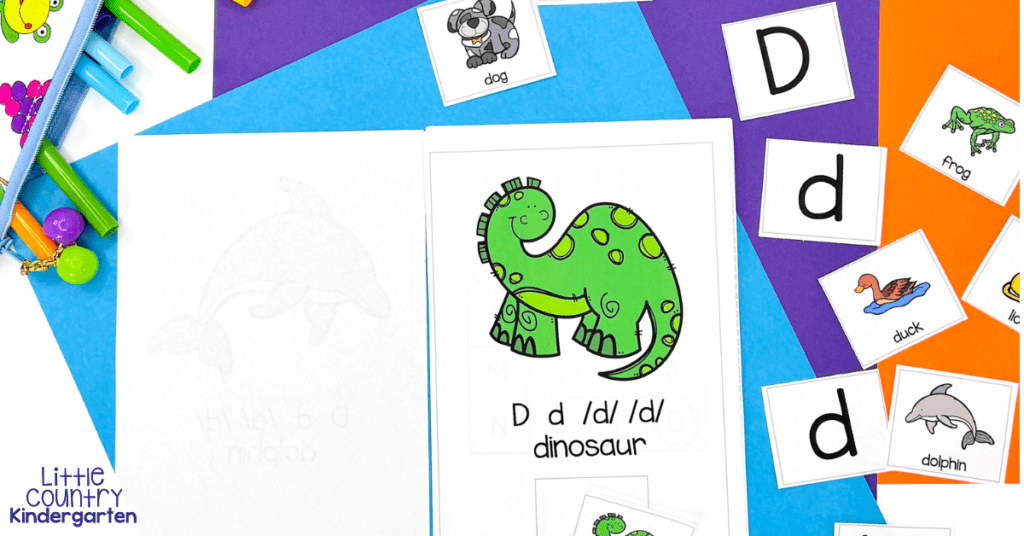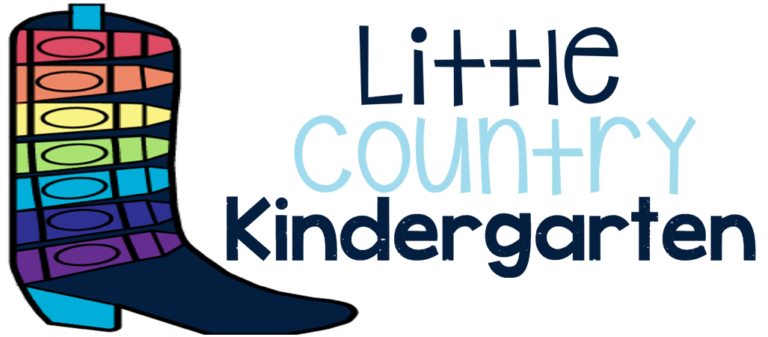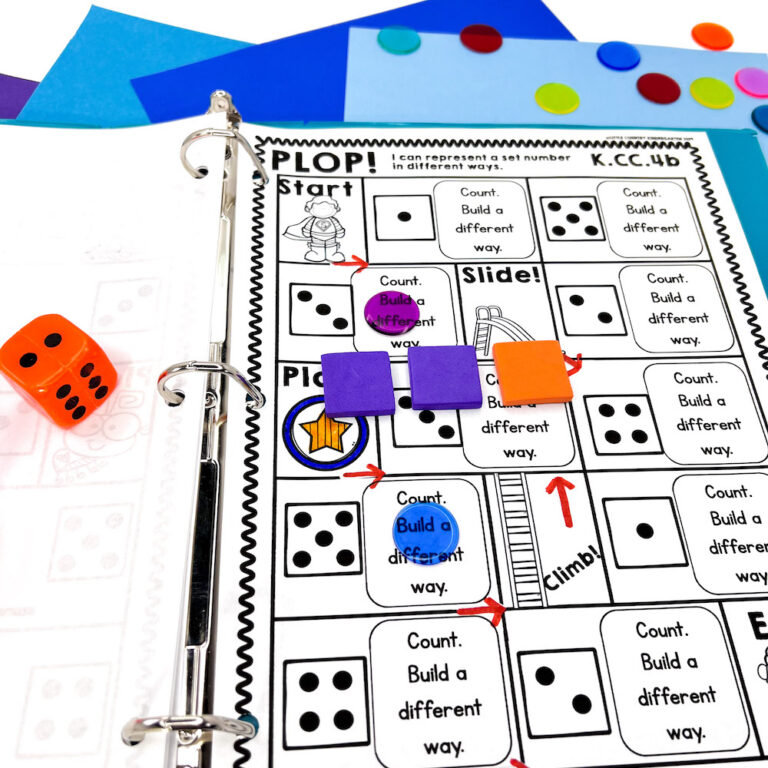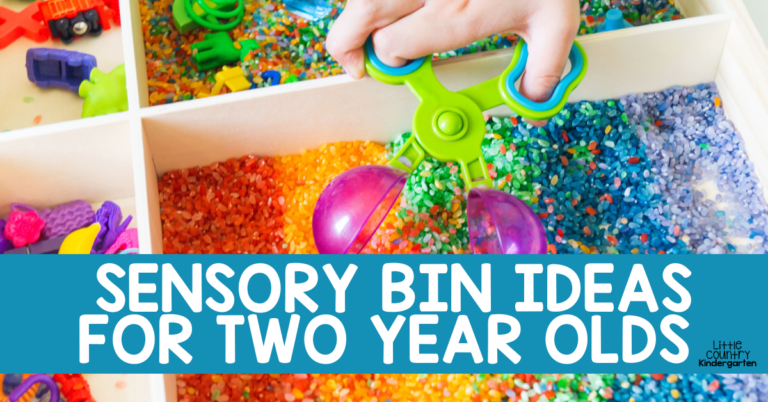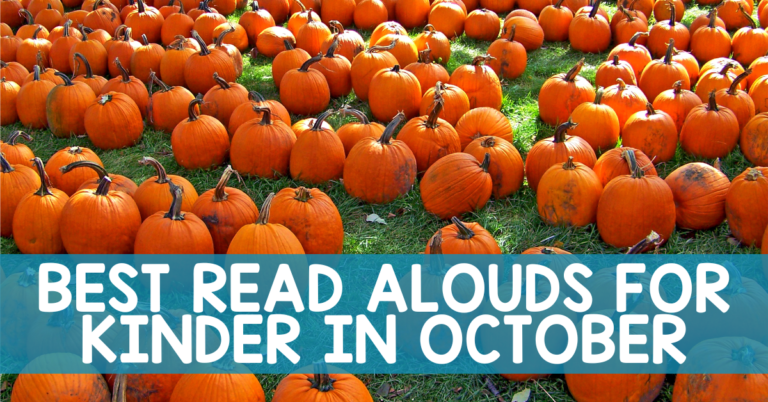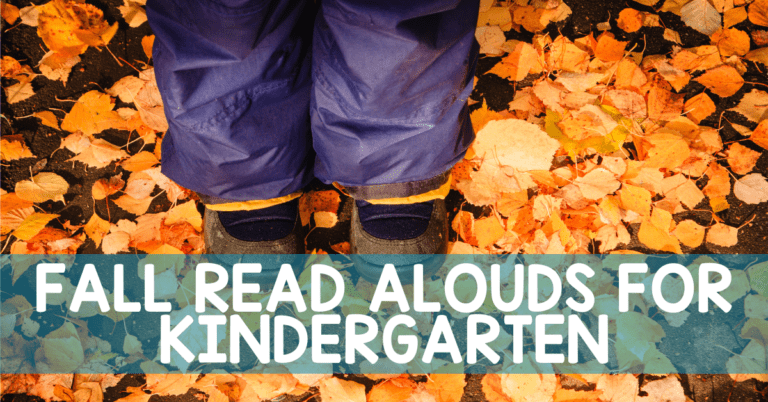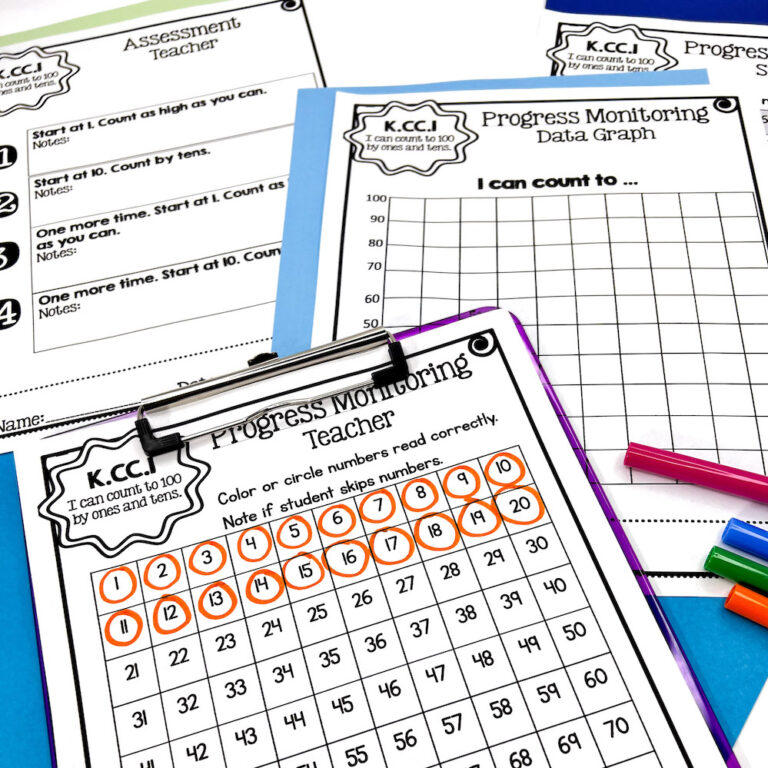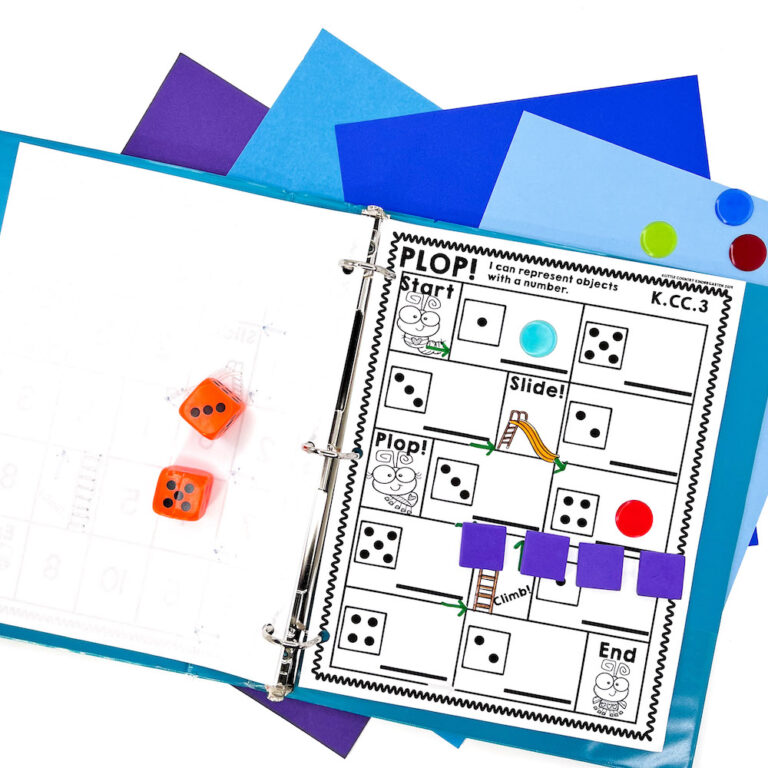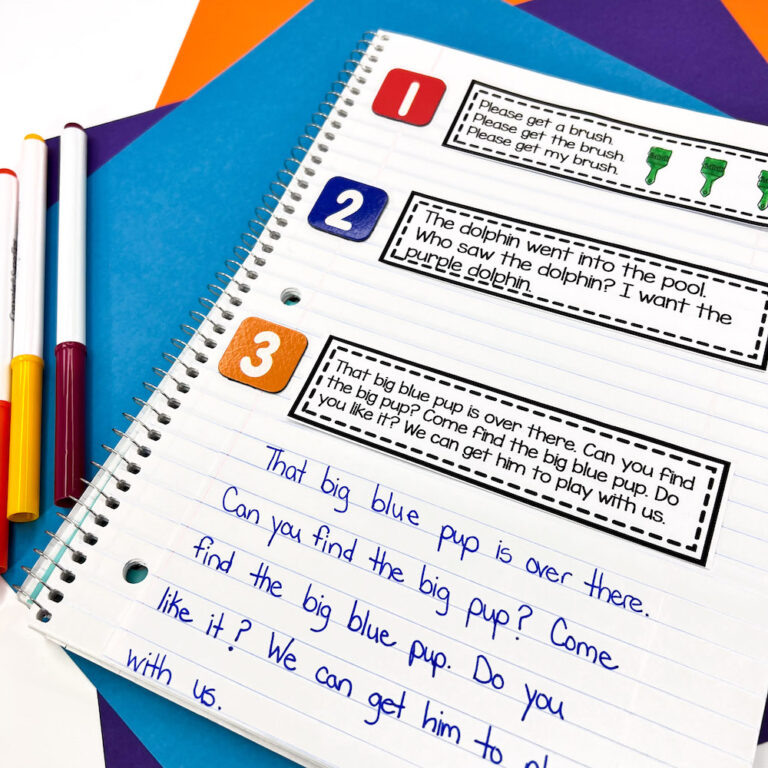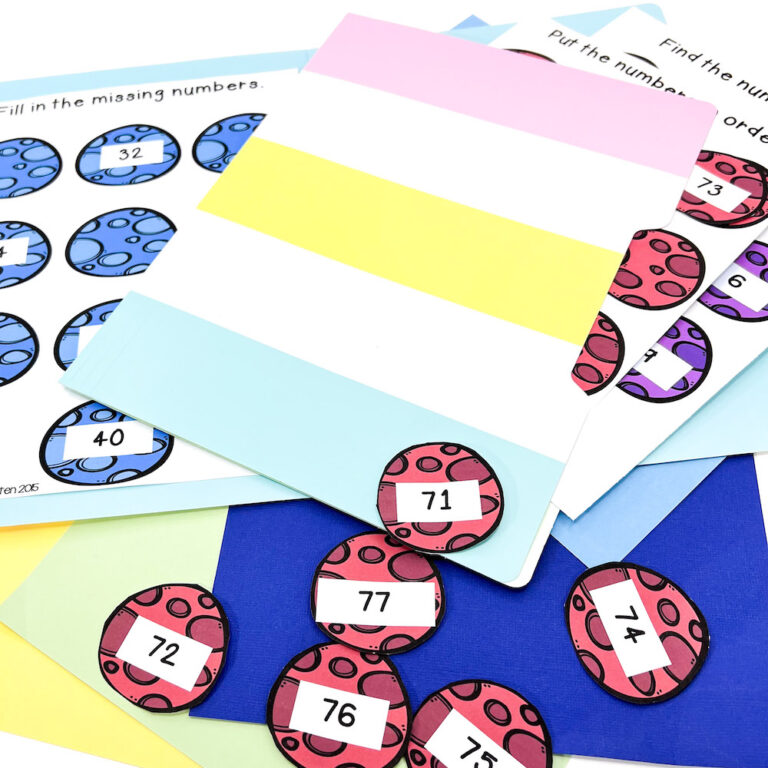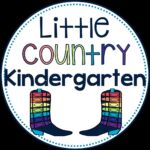Sensory bins encourage language opportunities, increase hand-eye coordination, and you’ll be amazed how well your toddler will focus and play independently with just a simple box of materials. A fall sensory bin is going to help your toddler learn and let you enjoy your coffee…well at least some of it.
What is a Fall Sensory Bin?
A fall sensory bin can incorporate many different types of materials. This one I created for my toddler had popcorn kernels, and little fall themed objects I found: pumpkins, mushrooms, acorns, and pinecones. This generic fall theme is perfect for late September/early October and can easily be swapped out for small objects you have in your house already. If your toddler still likes to put everything in their mouth and you don’t want to risk the popcorn kernels you may want to try an alternative filler such as leaves, straw, or oats.
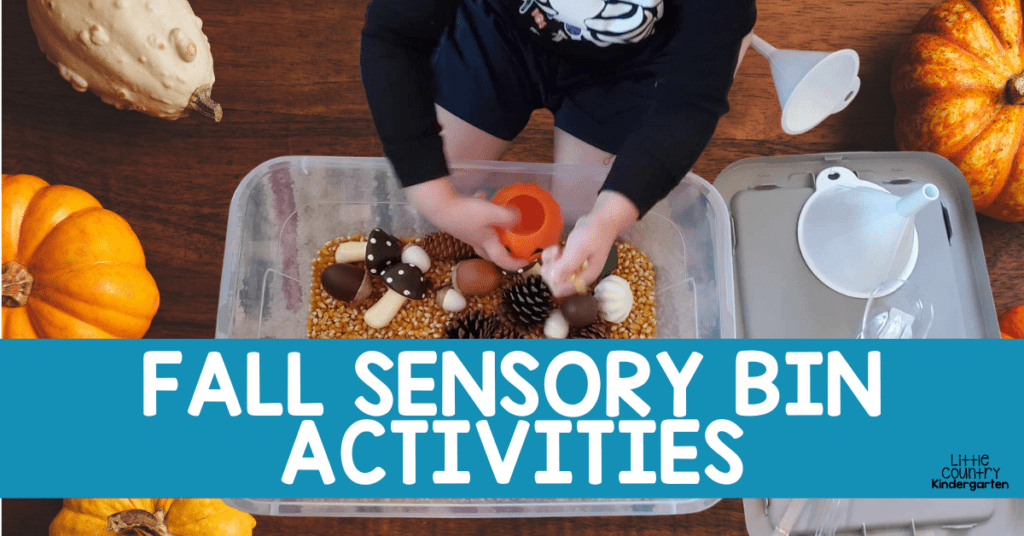
What Do You Need for a Fall Sensory Bin?
Materials to Collect
- Bins: 2 pack of 16 quart clear bins with lids
- Filler: popcorn kernels
- Bin Materials: pumpkins, acrorns, pinecones, mushrooms
- Tools: funnels and tongs
Rules to Set Up
On Day 1 I have the bin closed with the filler and objects and tools inside. I tell my toddler the filler, popcorn in this case, stays in the bucket. I remind him “popcorn stays in the…” and he’ll respond with “bucket.” I also remind him that we don’t eat anything inside the bin.
I open the lid and place any tools on the lid to help him stay organized. This may mean putting the funnels, tongs, scoops, and any other pouring tools or containing tools on the lid of the box. I find this helps there not be too many things inside the sensory bin at once and he’s more likely to use the tools if he can see what’s available and try them all out.
Keeping the materials contained in the bucket and not eating the materials are really the only rules I have for sensory bins. You may need to sit right beside your toddler at first but even after they understand how to stay organized while playing I always recommend staying in the room since small objects are always choking hazards.
Free Play First
I typically keep the same sensory bin available for two weeks. The first few days are solely for free play as I let my toddler explore the textures of the materials. I may label the different materials inside if he doesn’t know what things are, such as the mushrooms and acorns in this bin, but I don’t extend things or show him how anything works. I like to give him lots of time to try and make play schemas on his own and watch what he figures out.
If your little has never used funnels or tongs before you may want to show him or her how those work or just allow your child to try first and see what they think they do. Toddlers are always super creative if we allow them to be!
Although I don’t guide play at the beginning, if you notice your child isn’t really playing with things in the sensory bin there are some things you can troubleshoot.
- Take some materials out! There may be too much in the bucket and this can lead to them throwing things, trying to dump the bin, or simply being overwhelmed and not wanting to play.
- Organize the materials. You can put a few small cups in the sensory bin and place pumpkins in one cup, mushrooms in another, etc. Then present the bin to your toddler again and see if they are more inclined to play with it.
- Take a break! You’ve exposed your child to the bin and they might just not want to play with it right now. If your kiddo is anything like mine they will be sure to request it again later in the day or even the next day if you don’t get it out first!
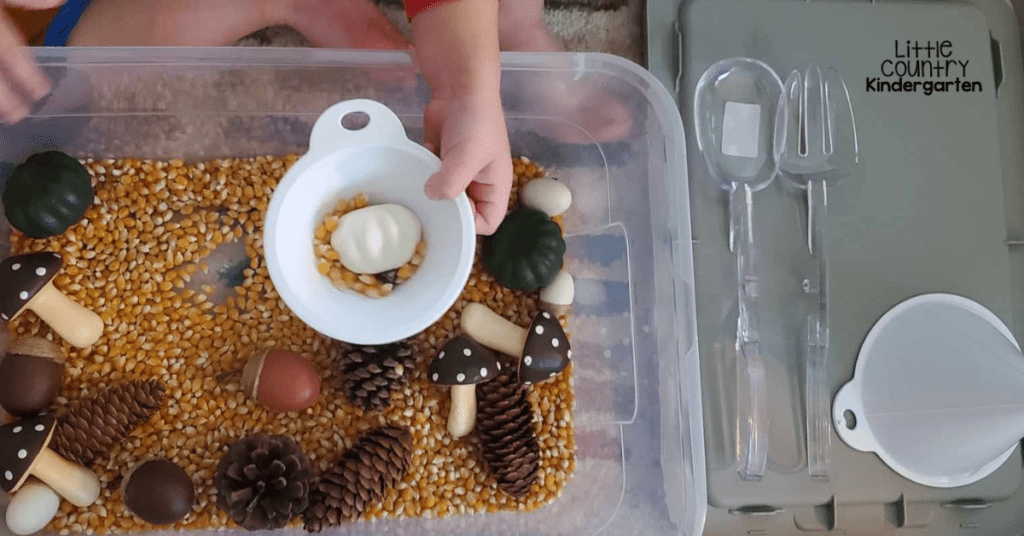
Guided Play Ideas
After a few days of free play I like to start suggesting some activities. After making a few sensory bins you’ll naturally be able to come up with these on your own! I love how extending this play works on so many important skills that toddlers need to learn.
- Experiment with funnels and scoops. Can you pour from one funnel into the next? Can you use the scoops to get popcorn into the funnel? Questions as well as modeling can engage your toddler in using the tools in different ways. Pouring in the funnels increases concentration and hand-eye coordination. Using the tongs strengthens the hand muscles your child will need to use to write when they get older and works on fine motor skills.
- Labeling objects and colors. This improves language skills as well as pre-academic skills. You can have your child repeat the names and colors after you or you can ask them questions to have them think of the names and colors first. I love to focus on open ended questions as much as possible.
- Organize items by shape, size, or color. You can get out colored construction paper and have your toddler sort items onto the color mats, line up the materials in the bin from smallest to biggest, and more. This works on focus, pre-academic skills, and organization.
- Make sensory bin soup. Encourage your toddler to use their creativity and imagination by making soup (that they don’t eat!) Pour popcorn kernels into the funnels or add cups to hold them. Then add “ingredients” one by one. What kind of soup can you make? I like to point out what happens if you put popcorn in first vs. if you put the larger items in first.
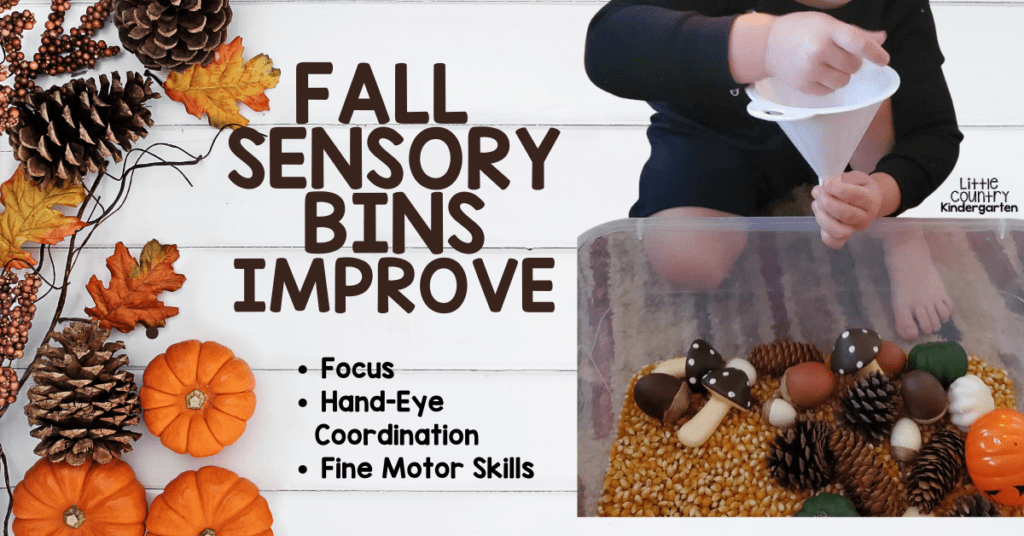
- Counting items and scoops. This works well with the soup idea where you can count how many scoops or items you are putting in the soup. Work on rote counting as you count one at a time, one-to-one correspondence, and comparing amounts. You can also add number flashcards and have your child say the number and then count out that many.
- Auditory and tactile play. Have your toddler close their eyes and listen to you pouring the popcorn into the bin or through the funnel. Pour kernels over their open hand or place objects like the pumpkins into their hand and have them guess what it is. Discuss how they can hear or feel things and use other senses besides just their sight.
- Match objects to pictures or word cards. You can draw or print pictures of the items in your bin and have your toddler work on non-identical matching as they match the 3D object to the 2D picture. You can also add the word such as “acorn” to the picture to have some authentic labeling. Older siblings might want to help write or read these words and work on literacy with your toddler.
- Extra objects. Your toddler will love bringing special toys to add to their sensory bin fun. Spy the little jack-o-lantern in the bin below? My son wanted to bring that over and spent that entire play session filling it up with popcorn kernels. You’ll be surprised how their additions will add to their play.
Your toddler will work on so many skills through these guided play activities! They will improve their fine motor skills, language, literacy and math, and more! Toddlers learn ownership and responsibility by keeping their tools organized and the materials in the bin. They will work on turn taking when picking things up with the tools if they are also playing with you or a sibling. Social skills and manners are something easily incorporated into this type of play since you are sharing a small space.
Sample Calendar of Fall Sensory Bin Play
Here is a sample idea of how you could use this fall sensory bin for two weeks and keep your toddler engaged and learning!

Fall Sensory Bin Tips
- Keep a close eye on your toddler as they play with the sensory bin. Small fillers can be choking hazards and you know your child best. If something isn’t working for you just take it out and try a different material. Lots of edible materials can be used as well such as oatmeal or cereal.
- Free Play vs. Guided Play. Toddlers are always learning about their environment, even without us prompting them! Take their lead and let them be curious and free play as long as they want. The sample schedule is just a suggestion! Your little one may get bored or want an extension before or later than suggested.
- Keep your materials to reuse! The best part about sensory bins is they can be used again later. Grab some gallon zip bags to keep the filler and another one for the small materials. That way you can use the base in other sensory bins and the small materials can come back out if you want to reuse a theme. I usually rotate every two weeks but, once again, follow your toddler! They’ll let you know when they are done with a sensory bin.
Fall Sensory Bin Takeaways
Fall sensory bin activities are extremely simple to set up yet super engaging to toddlers. Set up your bin and sit back and watch your little explore and learn!
- Find more sensory bin ideas for 2 year olds.
- Find crafts and other play opportunities for your toddler.
- Find more fall read alouds and activities.
Keep Your Toddler Learning Through Play!
Do you want more ideas for teaching your toddler through play, crafts, sensory bins, and more? Grab a free alphabet book and hop onto my email list so I can notify you when I create more posts!
